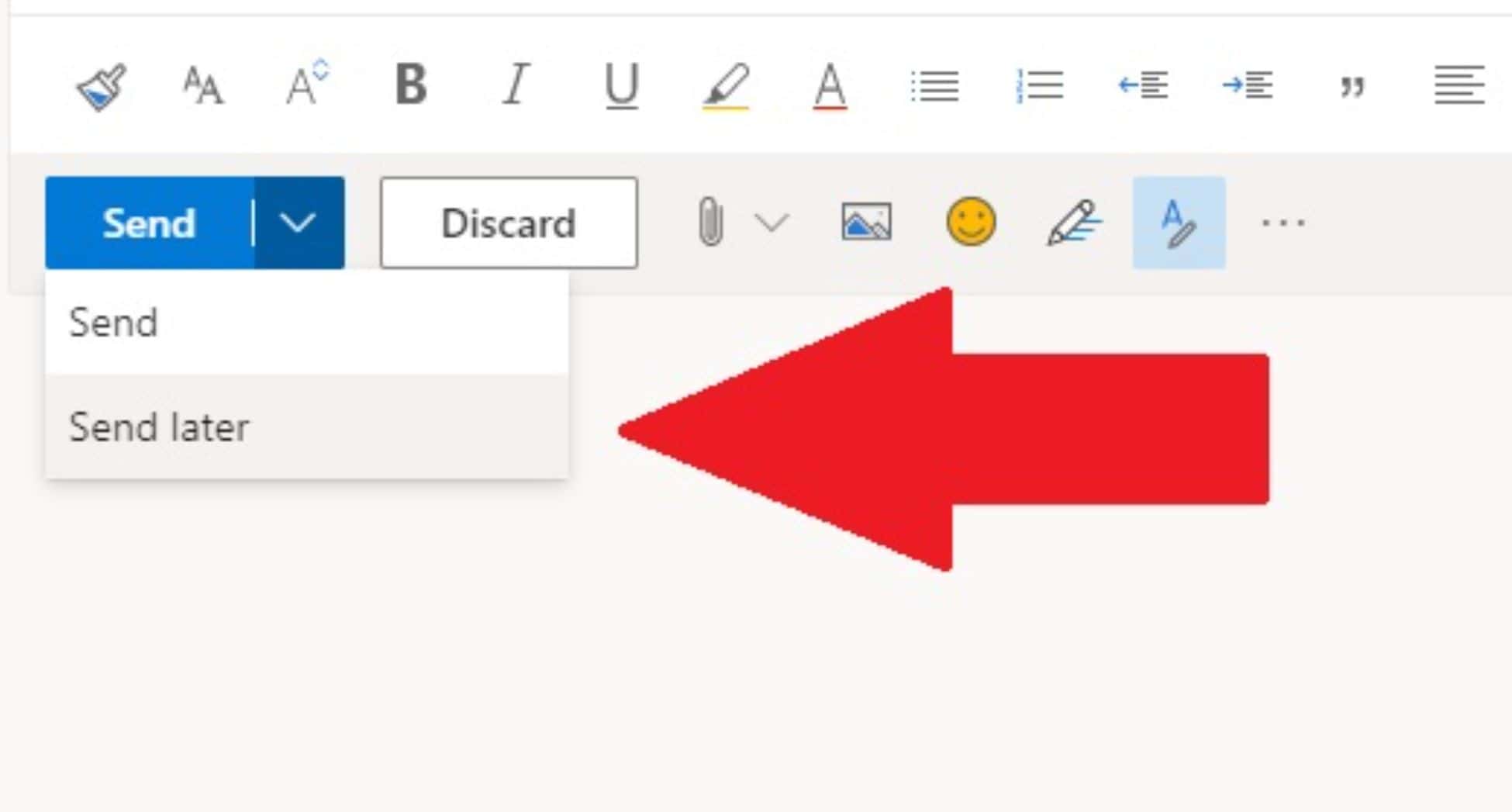

on the dot every day (Gmail's suggested send time), it might become obvious what's happening. If people keep getting emails from you at 1 p.m. Scheduling emails only takes a few clicks in most email clients, but you'll want to finesse the practice. The Schedule send button in Gmail is dangerously close to the regular Send button, so be careful until it's muscle memory. Whatever the reason, it means you get to check emails off your to-do list when you're ready to write them-even if the recipient isn't ready to get them.
#OUTLOOK SET EMAIL TO SEND LATER OFFLINE#
Maybe you just want to schedule an email for after someone's back from vacation, so you don't clog their inbox maybe you want to send someone a link to new content, but the link won't be live until after you're offline there are a lot of reasons to do this. It's not only helpful for those kinds of bad-news emails, though. It's one more thing I didn't check off my to-do list, I don't have inbox zero going into the weekend, and I have an emotionally stressful task waiting for me on Monday morning.īy scheduling the send, all of that is avoided. If they did write back, I either have to leave them hanging until Monday morning or work on the weekend in order to respond promptly.īut equally as annoying is not writing that email even though it's on my mind. I've further ruined my weekend because I keep checking my work email just in case, hoping they wrote back in a totally understanding way. I've ruined my weekend because I'm stressed about how they'll react. If the person is at their desk when I send the email, they might read it right away-at 4 p.m. I have a feeling I'll get either a lot of questions or an unhappy response. on a Friday, and I'm sending an email that I know the recipient won't be thrilled about (e.g., telling a freelancer that their work needs a ton of revisions). That time is decidedly not at the end of my workday or in the last hours before my weekend.Įxample: it's 4 p.m. And in this case, "later" isn't some fuzzy amount of time-it's a really specific time when I know I'm ready for the recipient to read the email. You'll have less email stressĮmail stress is the main reason I schedule emails for later. Responding right away is sometimes helpful for the recipient, but usually, a delay is the way to go-it'll make the person feel better about the thoughtfulness and intentionality of the response. They didn't-but perception is reality.Įspecially if you batch your email, you're bound to see some messages the instant they come in. If the person took the exact same amount of time, but the email showed up in your inbox six hours later, or even the next day, you'd think they'd put more thought into it. But your first reaction is going to be: wow, they didn't really think about that enough. Ten minutes is a decent amount of time to think about something small, do some quick research, and write back (especially if you follow my five-minute email rule). Imagine you send someone an email asking their opinion on something small, and 10 minutes later, you have a response with their opinion. The recipient might think that I always work at that time, which sets a bad precedent, leading them to expect responses from me at all hours. Which is clearly what's happening if I'm online at 9 p.m. No one wants to picture a semi-stranger working on their couch in their pajamas with Survivor reruns on in the background. It could make people think my company isn't a good place to work (which is the opposite of the point I'm working those hours because of Zapier's flexible work policies). And if people know where I'm located, that's not always great. (The joys of flexible work hours.) That means that sometimes I'm sending emails at 9 p.m. I often time shift, working an hour at night, for example, because I went to my kid's school sing-along during the day or just decided I needed a long break for an iced mocha. You have a deadline: that email will send at the scheduled time unless you actively change it.
/Textplaceholder3-75811d026f244f40a280861ea7fbcba2.jpg)
The difference between this tactic and just "sleeping on it" or writing it as a draft is that it feels more like a real decision. You'll either feel a sense of relief or a sense of dread. To help you get clarity, respond to the email (either yes or no-doesn't matter), and click Schedule send. Let's say you're not sure if you want to speak at a webinar that someone asked you to do. The moment the coin lands-regardless of how it lands-your gut will tell you which outcome you'd been hoping for.Ĭlicking Send on an email has the same effect. (Did I invent this phenomenon? I hope so.) You can't decide about something, so you flip a coin. If you change your mind about an email, just go into the email (via the Scheduled folder), and click Cancel send.īut it also works for bigger picture things.


 0 kommentar(er)
0 kommentar(er)
